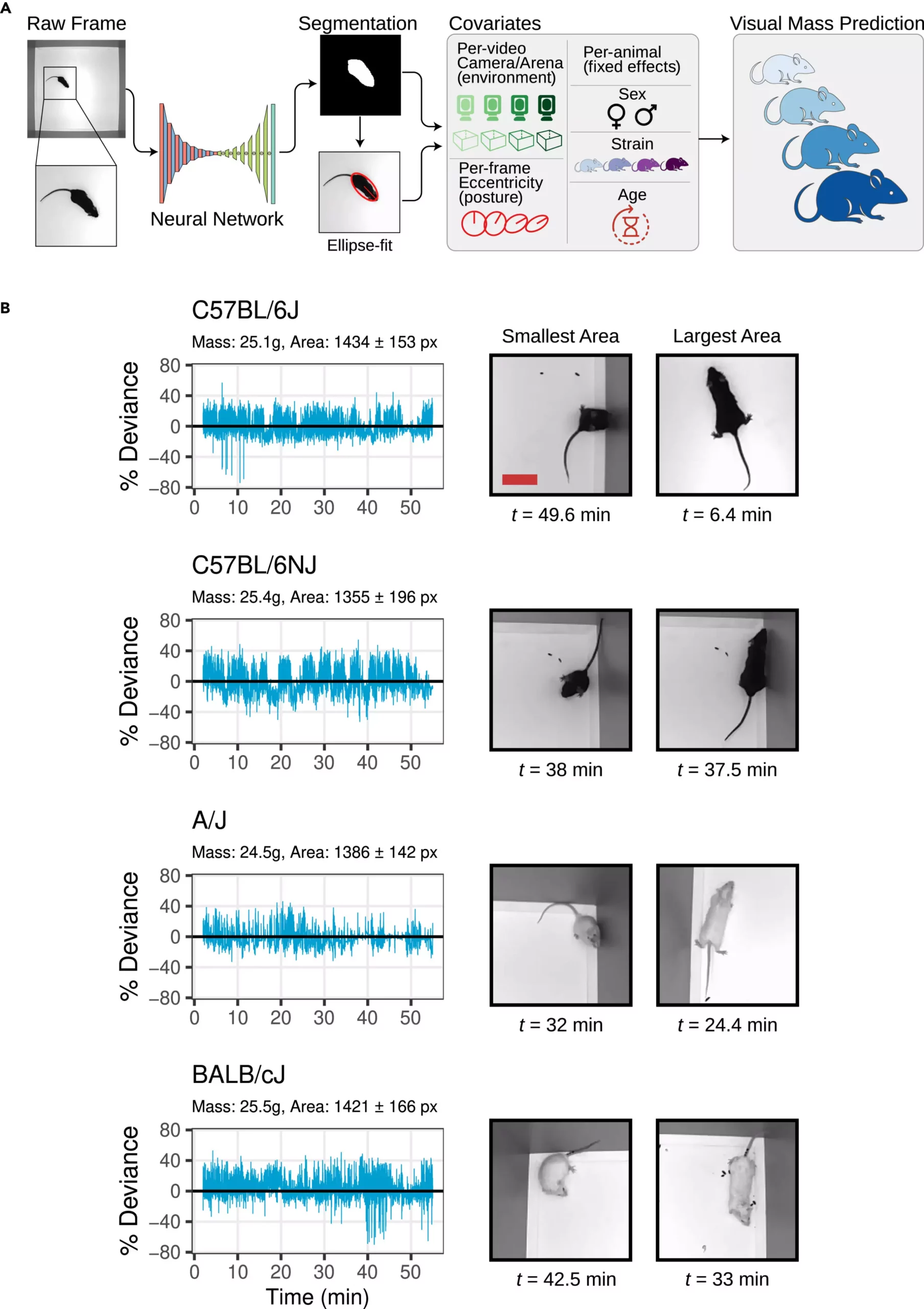In a pioneering effort to revolutionize the way mouse body mass is measured, a research team led by Jackson Laboratory (JAX) Associate Professor Vivek Kumar, Ph.D., has developed a non-intrusive method using computer vision technology. This innovative approach aims to address the limitations of traditional weighing techniques while enhancing the quality and reproducibility of biomedical research involving mice.
In both human health and biomedical research, body mass serves as a critical metric, offering insights into overall health and potential health issues. However, the conventional method of weighing mice involves removing them from their cages and placing them on a scale, a process that can induce stress and introduce variables that may impact research outcomes. Moreover, the sporadic nature of these measurements further complicates the accuracy and reliability of data.
The Development of a Solution
Recognizing the shortcomings of existing methods, Kumar and his team of computational scientists and software engineers delved into the realm of computer vision technology. By analyzing a vast mouse video dataset previously used for assessing grooming behavior and gait posture, they devised a method to calculate body mass with less than 5% error, as reported in a recent publication in Patterns.
The research team encountered several obstacles in their quest to develop this groundbreaking method. Mice, unlike the static subjects used in industrial farming, are dynamic creatures that frequently change posture and shape, posing a significant challenge for accurate body mass measurement. Furthermore, the team had to contend with 62 different mouse strains, each with unique characteristics, necessitating the use of multiple visual metrics, machine learning tools, and statistical modeling to achieve the desired level of accuracy.
The new method offers a host of benefits for researchers. It enables the detection of subtle changes in body mass over consecutive days, particularly crucial for studies involving drug or genetic manipulations. Additionally, it has the potential to serve as a diagnostic tool for general health monitoring and can be adapted for use in different experimental settings and with other organisms in the future.
The development of a non-intrusive method to accurately and continuously measure mouse body mass using computer vision represents a significant advancement in the field of biomedical research. By alleviating the stress associated with traditional weighing techniques and improving the frequency and reliability of measurements, this novel approach promises to enhance the quality and reproducibility of preclinical studies involving mice. As researchers continue to explore the applications of this technology, the potential for further innovations and advancements in the field remains vast.


Leave a Reply